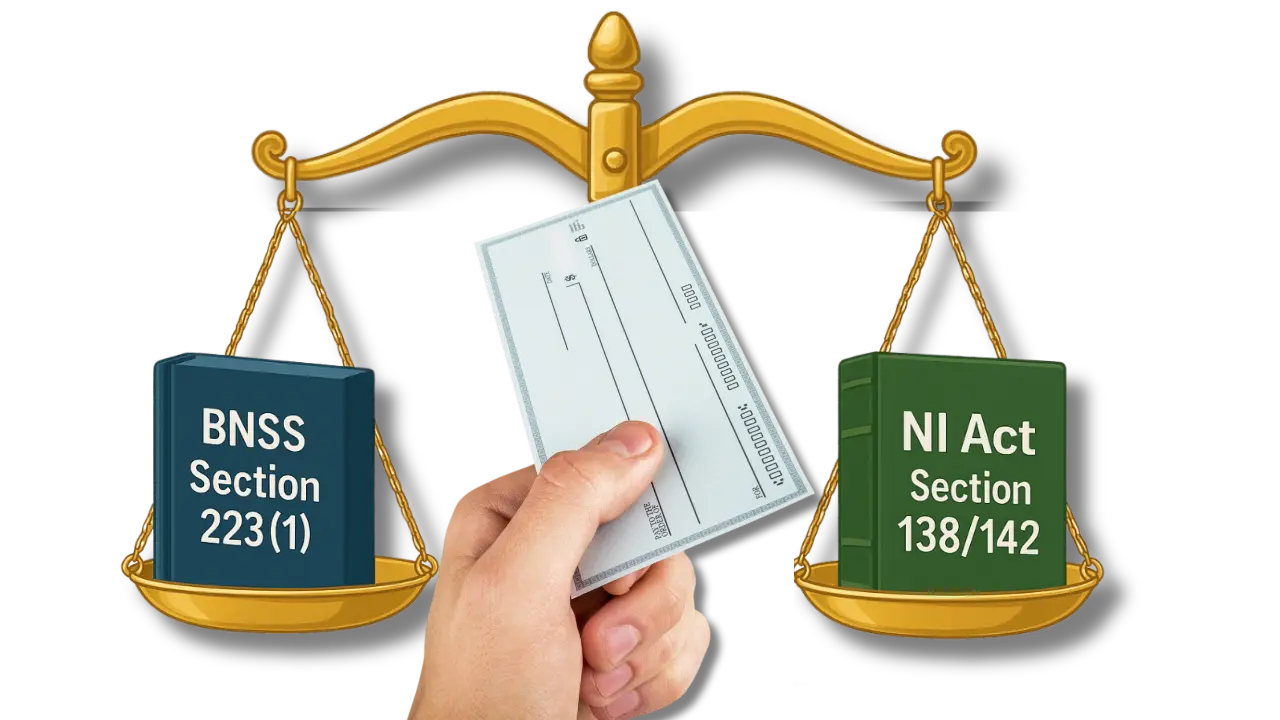Introduction
Imagine a business partnership governed by a Shareholders’ Agreement (SHA). One partner decides to start a competing venture despite a non-compete clause in the SHA. The other partner fears this will cripple their joint business and seeks urgent legal protection. They approached an arbitral tribunal for an interim award under Section 17 of the Arbitration Act1 asking for an immediate halt to the new business.
This is the very heart of the issue recently addressed by the Delhi High Court in Paul Deepak Rajaratnam & Ors. Versus Surgeport Logistics Private Limited & Anr2. The court was faced with a critical question: Can an arbitral tribunal issue an interim order to restrain a party from breaching a contract, specifically a non-compete clause, even though Section 27 of the Indian Contract Act generally voids agreements that restrain trade?
In a significant ruling, the Delhi High Court’s bench of Justice Jasmeet Singh held that such an interim award is not barred by Section 27 of the Indian Contract Act. The court reasoned that if a contract, like the SHA, is still valid and has not been lawfully terminated, an interim award under Section 17 can be used to prevent the subject matter of the arbitration from being rendered useless.
This particular case stemmed from an appeal filed under Section 37 of the Arbitration Act, challenging an interim award passed under Section 17. The judgment provides a crucial clarification on the interplay between arbitration law and contract law, especially regarding restrictive covenants. This article will delve into a detailed analysis of the precedents and legal principles relied upon by the court to reach this important decision.
As the appeal in this case was filed under Section 37 of the Arbitration Act, it becomes crucial to understand the scope of judicial interference permitted under this provision. Section 37(2)(b) allows for an appeal from an arbitral tribunal’s order granting or refusing an interim measure under Section 17. However, as the Delhi High Court has consistently held, including in the cited cases like National Highways Authority of India v. HK Toll Road Private Limited3, the appellate court’s jurisdiction is exceptionally limited.
The court’s interpretation, rooted in the principle of minimal judicial intervention enshrined in Section 5 of the Act, dictates that an appellate court cannot simply substitute its own view for that of the arbitral tribunal. Interference is warranted only if the interim award is found to be perverse, arbitrary, unreasonable, contrary to the fundamental policy of Indian law, or if the tribunal has exceeded its jurisdiction. The objective is to uphold the autonomy and efficiency of the arbitration process, not to re-evaluate the merits of the tribunal’s reasoning. Therefore, the appellate court must exercise its power with “due circumspection and restraint,” intervening only when there’s a clear miscarriage of justice or a manifest illegality.
Having established the limited scope of judicial interference under Section 37, the court then turned its attention to the very foundation of the interim award: the ambit of Section 17 of the Arbitration Act. What powers does an arbitral tribunal actually possess to grant interim relief?
Section 17 is a cornerstone of arbitration law, empowering an arbitral tribunal to issue interim measures during proceedings. The scope of this power is broad and mirrors the authority of a civil court. Think of it as a crucial tool for an arbitral tribunal to safeguard the subject matter of the dispute. The court highlighted that a tribunal’s powers under Section 17 are not a mere suggestion; they are equivalent to those of a civil court. This is a critical point: an interim award passed under this section is as legally binding and enforceable as a court order.
As the court noted, citing cases like Handicraft and Handlooms Exports Company of India v. SMC Comtrade Limited4 and Arcelormittal Nippon Steel (India) Ltd. v. Essar Bulk Terminal Ltd5., the purpose of Section 17 is to allow parties to seek the “preservation of the subject matter of the arbitration agreement” and to secure the amount in dispute. It grants the tribunal a “wider canvass” to make orders of interim protection, which are essential to prevent the arbitration from becoming a futile exercise. But what guides a tribunal in exercising this power? The court emphasized that a tribunal, like a civil court, must satisfy the well-established “triple test” for granting interim relief: a strong prima facie case, a balance of convenience in favor of the applicant, and irreparable injury or loss to the applicant if the relief is not granted.
This is where the narrative becomes particularly compelling. A central argument raised by the appellants was that the interim award, which restrained them from competing, was unenforceable because it violated Section 27 of the ICA6. This section famously declares that “every agreement by which anyone is restrained from exercising a lawful profession, trade or business of any kind, is to that extent void.” How can a non-compete clause, which seems to fall squarely under Section 27, be enforced through an interim award?
The court’s response was both nuanced and pivotal. The learned arbitrator and the court on appeal concluded that the appellants’ argument was flawed because it overlooked a fundamental distinction: the difference between a restrictive covenant that operates during the subsistence of a contract and one that operates post-termination.
The court, relying on the Supreme Court’s judgment in Vijaya Bank & Anr. v. Prashant B. Narnaware7, reiterated that a restrictive covenant that applies while a contract is in force is generally considered valid. Why? Because it doesn’t “clog the freedom” of a party to trade; rather, it’s a condition of the contract they willingly entered into. The court distinguished this from cases like Percept D’Mark (India) Pvt. Ltd., where the agreement was validly terminated, and the restrictive clause was an attempt to control the party’s actions afterthe contract had ended.
So, the crucial pivot in this case was the court’s finding that the Shareholders’ Agreement (SHA) had not been validly terminated8. The arbitrator’s finding, which the High Court upheld, was based on several key facts: the appellants continued to be directors of the company, a fact even noted by the Delhi High Court in a previous order; the appellants’ own actions were inconsistent with their claim of termination, as they delayed invoking the termination notice and took contradictory positions regarding the SHA’s very existence; and their plea of termination was raised late in the arbitration proceedings, suggesting it was an “afterthought” and an “opportunistic” move to evade their contractual obligations. Because the SHA remained valid and subsisting, the non-compete and non-solicit clauses were also still in force. Consequently, an interim award restraining a breach of those clauses was not a restraint of trade but a necessary measure to uphold the terms of a valid contract.
The court found that the award was narrowly tailored, only restraining the appellants from a specific kind of business activity (“international logistics and freight forwarding”) and was, therefore, not an unreasonable or absolute restraint on their right to livelihood.
Finally, the court held that the interim award satisfied all three prongs of the triple test. Was there a prima facie case? Yes, the respondents presented a strong case based on the appellants’ shifting stances, their misuse of the company’s goodwill, and evidence of engaging in competing business, all of which were never denied. Would irreparable injury be caused? The court rejected the appellants’ argument that the provision for liquidated damages under Clause 15(3) of the SHA made injunctive relief unnecessary. It found that the global nature of the freight forwarding business would make it “virtually impossible” for the respondents to track and quantify the losses from the appellants’ continued competing activities. Damages, in this case, would be inadequate and an “irreparable injury” would be caused.
Did the balance of convenience tip in the respondents’ favor? The balance of convenience tipped in favor of the respondents. Restraining the appellants from a specific, contractually restricted business area was a proportionate measure to protect the respondents’ business. The interim award was also balanced and did not impose an absolute restraint on the appellants, who were free to pursue any other lawful trade.
This judgment provides a clear and robust framework for arbitral tribunals to grant interim reliefs, confirming that such measures are a valid and powerful tool to protect contractual obligations, especially when the underlying agreement has not been lawfully terminated. It powerfully re-establishes the supremacy of a valid contract and the arbitration act over the misapplication of section 27 of the Indian Contract Act.
Citations
- Arbitration and Conciliation Act,1996
- Paul Deepak Rajaratnam & Ors. Versus Surgeport Logistics Private Limited & Anr. ARB. A. (COMM.) 5/2025
- National Highways Authority of India v. HK Toll Road Private Limited, 2025 SCC OnLine Del 2376.
- Handicraft and Handlooms Exports Company of India v. SMC Comtrade Limited, 2023 SCC OnLine Del 3981
- Arcelormittal Nippon Steel (India) Ltd. v. Essar Bulk Terminal Ltd.Aironline 2021 SC 718
- Indian Contract Act,1872
- Vijaya Bank &Anr. v. Prashant B. Narnaware, 2025 INSC 691
- Percept D’Mark (India) Private Limited v. Zaheer Khan, (2006) 4 SCC 227
Expositor(s): Adv. Anuja Pandit






